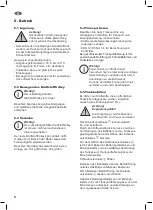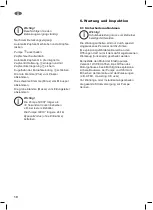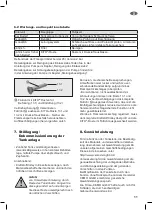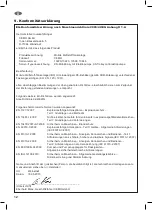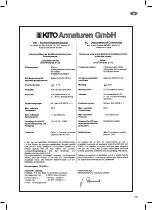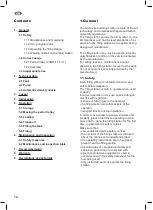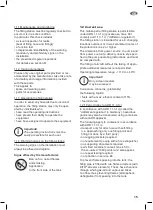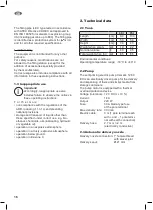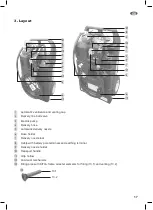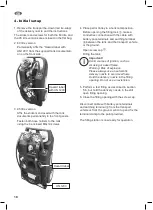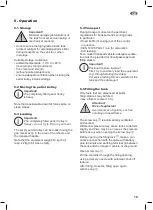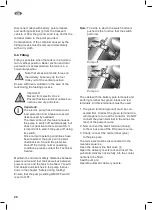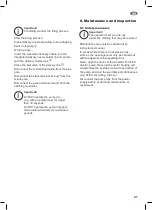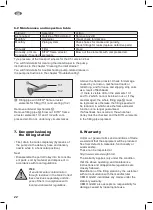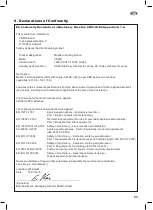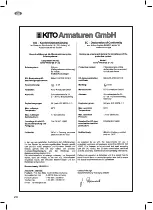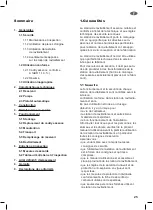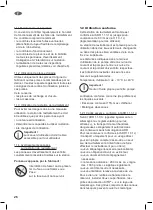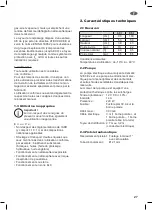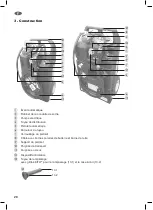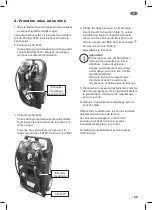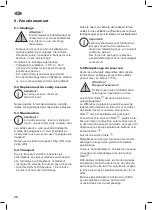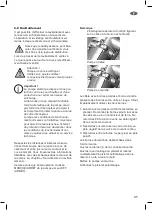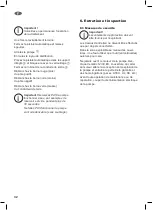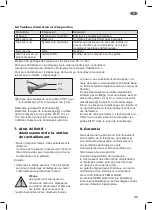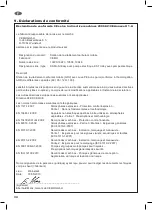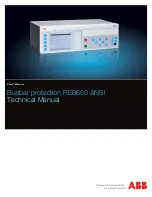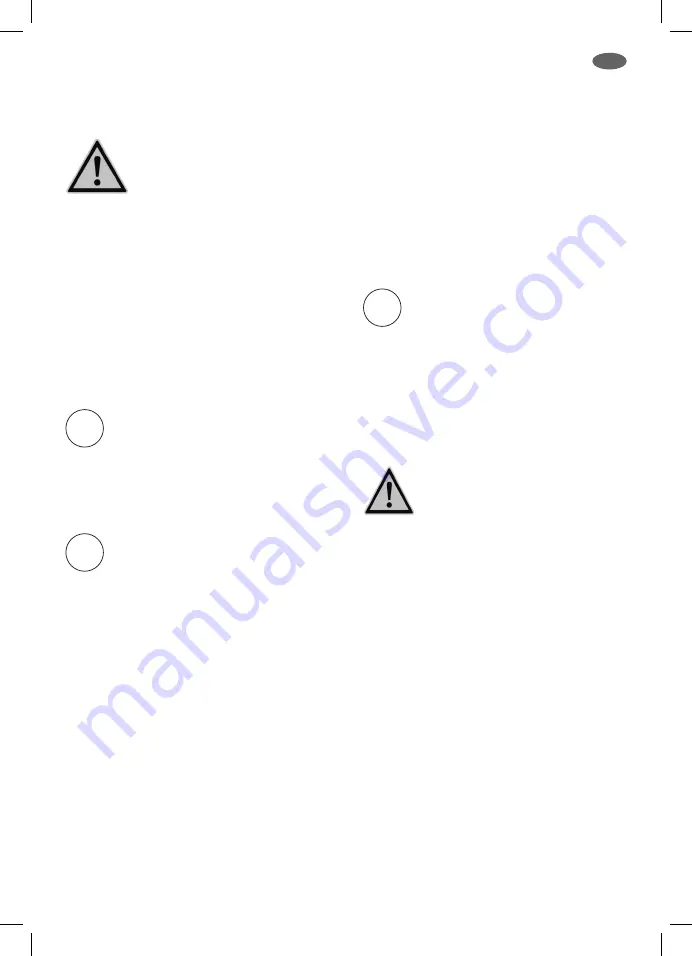
19
GB
5. Operation
5.1 Storage
Important!
Material damage (deformation) of
the tank from excessive heating or
mechanical overload.
• do not expose the high-grade plastic tank
to direct sunlight for extended periods either
during transport on the vehicle or when
in storage.
Suitable storage conditions:
• ambient temperature: -10 °C to +40 °C
(cover when storing outdoors)
• floor: level and smooth
(without pointed projections)
• ensure adequate ventilation when storing the
petrol trolley inside buildings
5.2 Moving the petrol trolley
i
Important!
The completely filled petrol trolley
is heavy.
Note that considerable downhill forces arise on
steep slopes.
5.3 Loading
i
Important!
The completely filled petrol trolley is
heavy – do not try to lift it on your own.
The empty petrol trolley can be loaded using the
grip recesses
k
in the area of the wheels and
the transport handle.
Note that the equipment weighs 19 kg (60 l)
resp. 22 kg (95 l) when empty.
5.4 Transport
During transport, observe the pertinent
regulations for transport and securing loads,
in particular:
• Road traffic (licensing) act of the country
in question
• CEN 12195 Parts 1 to 4 for calculation
and lashing.
For a closed transport vehicle, adequate ventila-
tion must be provided for driver/passenger and
filling station.
i
Important!
Positive fit before traction!
First, try to positively load the equipment
(e.g. through striking the sides).
Excessive lashing forces can deform the
tank and thus damage it.
5.5 Filling the tank
Only fuels that are dispensed at public
filling stations may be filled
(max. ethanol content 15 %).
Attention!
Risk of explosion!
Avoid sources of ignition, such as
smoking or naked flame.
The screw cap
a
is automatically ventilated
and vented.
Differential pressure may cause tanks to deform
slightly and there may be a noise as the pressure
balances out when opening the screw cap
a
.
Before opening the filling lock
a
, make a con-
ductive connection with the cable with battery
pole terminals and earthing terminal
h
between
the tank and the transport vehicle or the ground.
Open screw cap
a
.
Fill the container through the filling opening
using a delivery nozzle with automatic shut-off
feature.
After filling, close the filling open again
with the cap
a
.




